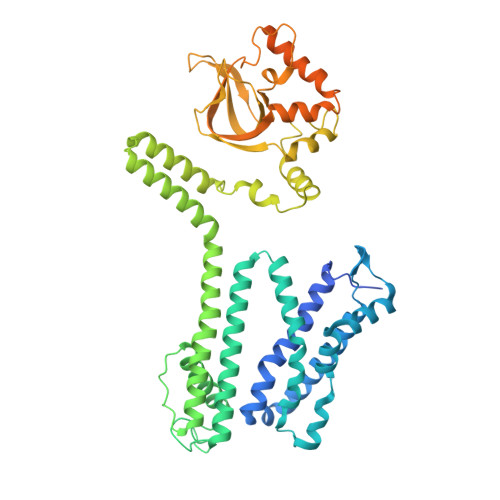Structural mechanisms of gating and selectivity of human rod CNGA1 channel.
Xue, J., Han, Y., Zeng, W., Wang, Y., Jiang, Y.(2021) Neuron 109: 1302-1313.e4
- PubMed: 33651975
- DOI: https://doi.org/10.1016/j.neuron.2021.02.007
- Primary Citation of Related Structures:
7LFT, 7LFW, 7LFX, 7LFY, 7LG1 - PubMed Abstract:
Mammalian cyclic nucleotide-gated (CNG) channels play an essential role in the signal transduction of the visual and olfactory sensory systems. Here we reveal the structural mechanism of ligand gating in human rod CNGA1 channel by determining its cryo-EM structures in both the apo closed and cGMP-bound open states. Distinct from most other members of voltage-gated tetrameric cation channels, CNGA1 forms a central channel gate in the middle of the membrane, occluding the central cavity. Structural analyses of ion binding profiles in the selectivity filters of the wild-type channel and the E365Q filter mutant allow us to unambiguously define the two Ca 2+ binding sites inside the selectivity filter, providing structural insights into Ca 2+ blockage and permeation in CNG channels. The structure of the E365Q mutant also reveals two alternative side-chain conformations at Q365, providing a plausible explanation for the voltage-dependent gating of CNG channel acquired upon E365 mutation.
- Howard Hughes Medical Institute and Department of Physiology, University of Texas Southwestern Medical Center, Dallas, TX, USA; Department of Biophysics, University of Texas Southwestern Medical Center, Dallas, TX, USA.
Organizational Affiliation:


















